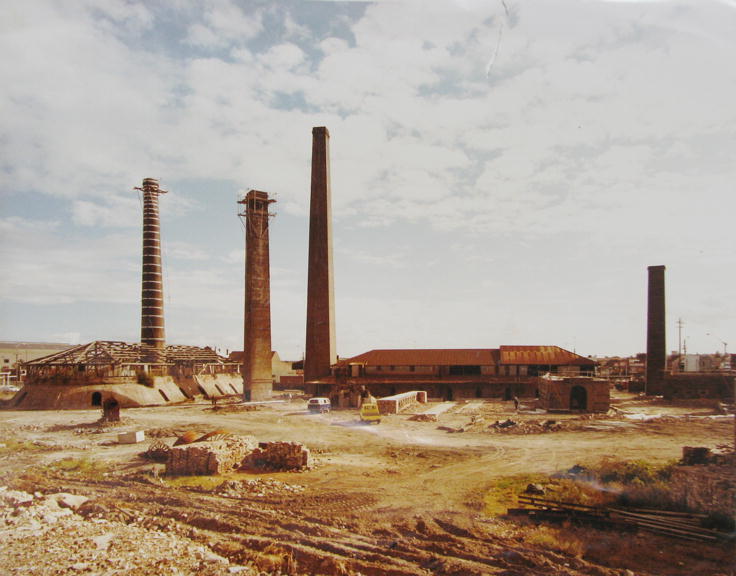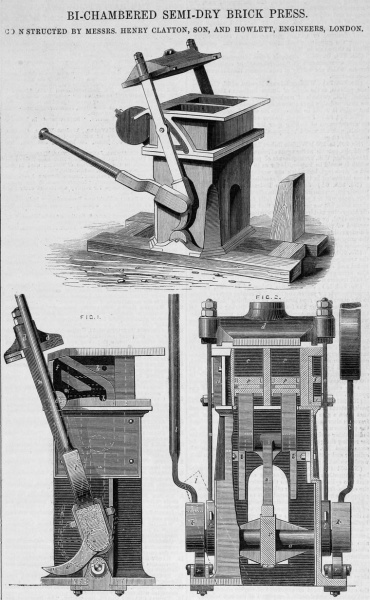Planning
First, make a scale drawing of your walkway to help calculate material quantities. Then, decide upon a brick pattern. The simplest choice is the running-bond pattern that we used. Other popular patterns are herringbone and basket weave (see drawings). The patterns can be aligned with the direction of your walk, or at an angle. Keep in mind, though, that a complicated pattern or angled alignment will result in more waste.
Bricks used for walks, patios and driveways are called pavers and they’re not the same as those used for wall or fireplace construction. Ordinary brick is much too porous and soft for paving applications, and would quickly crack and disintegrate if used for a walk. A standard paver measures 3 3⁄4 x 7 1⁄2 in., and is about 2 1⁄8 in. thick. Calculate the area of your walkway and allow five bricks per square foot. For a running bond, add 10 percent for cutting and defects. If your walk has a curved or angled shape, or if you choose a more involved pattern, allow extra bricks for cutting.
Preparation
Before beginning the walk, inspect the site and check the slope of the ground. Use a straight 2 x 4 and level to determine the slope. Ideally, the walk should be at the same height as the surrounding ground. In some cases, adjusting the height and pitch of the walk may be necessary. It’s important that the walk have a slight slope to allow water to run off the surface. The pitch should run away from any adjacent building, and it’s acceptable for the walk to slope slightly to one side to drain water. The required slope is 1⁄4 in. per every 4 ft. of run, so you won’t notice it when using the walk.
Determine the outline of the walkway excavation. Your hole should be at least 6 in. wider than the finished walk on each edge. Lay long 2 x 4s on the grass to indicate the edges. If the walk is to be curved, you can use a garden hose or heavy rope to mark the outline. Spread a line of ground limestone just inside the border to mark the grass. Then, remove the 2 x 4s, use a spade to cut the grass along your layout lines and remove the sod.
Now drive wooden stakes into the surrounding grass. Keep the stakes about 12 in. away from the edge of the hole, and space them about 3 ft. apart along the length of the walk on both edges. Stretch mason’s line between pairs of stakes across the walkway area. The lines will serve as guides for gauging the depth of the hole and the stone base. Adjust the height of the string so it’s at a uniform distance above the adjacent ground surface. The height of the string is arbitrary, but it should be high enough above the hole so it won’t interfere with your work.
Continue excavating the site of the walk. Use the shovel to cut the sides of the hole vertically so the gravel base will be at its full depth right to the edge of the hole. Check the depth of the hole by measuring up to the string guides. The bottom of the hole should be approximately 7 1⁄2 in. below the surface of the ground. Try for a reasonably flat-bottomed hole. If you remove any large stones, simply fill the recesses with gravel.
Prepare The Bed
Use a wheelbarrow to bring the gravel to the excavation. Spread the gravel to a minimum depth of 4 in. with a garden rake. Check the height of the gravel against the guide strings. When the gravel is at the proper height, remove the strings to provide unobstructed access to the site. This is the time to set the slope of your walk. Adjust the pitch of the base by adding more gravel where required. Use a length of 2 x 4 and your level to check the slope.
Next, use the plate compactor to pack the gravel base. Slowly move the machine over the surface several times. Proper compacting of the base will prevent the walk from settling later.
Temporarily place a row of bricks at each end of the walk to act as guides in positioning the edge restraints. This technique minimises the amount of cutting required. If you’re using the running-bond pattern, it’s especially important to avoid having partial bricks at the edges.
Place the edging against the bricks and drive the landscape spikes to lock it in place. Space the spikes about 3 ft. apart along the edging. Where necessary, cut the edging to length with a hacksaw. If your walk has a curved profile, simply cut the webbing on the outside of the edging so it can be bent to the required shape.
Spread a 1-in.-deep layer of sand over the gravel base (Fig. Use a 2 x 4 to screed the sand to a smooth surface. If you cut a 1 3⁄4-in.-deep notch at each end of the 2 x 4, you can rest the notches on the edge restraints while you pull the 2 x 4 across the sand.
Laying Bricks
Begin laying the bricks at one end of the walk. For a running-bond pattern, stagger the bricks by half their length, leaving the spaces at the end to be filled later. Once you have about 2 ft. of the walkway laid out, you can kneel on the bricks to work. Take care to lay each brick so its edges tightly abut the adjacent bricks. Once all the full bricks are laid, use the saw to cut bricks to fill the spaces in the walk. Fill the reservoir in the saw base with water. The water is circulated to cool the blade and keep dust to a minimum.
After all the bricks are in place, go over the walk several times with the plate compactor to settle the bricks into the sand base. This procedure locks the bricks in place to help keep them from shifting when the walk is exposed to
severe weather or heavy use.
Use a broom to brush sand over the surface to fill the spaces between the bricks. Go over the walk several times to ensure a thorough job. Sweep up the excess and lightly hose down the walk to remove any dust. After the walk has been in service for a couple of weeks, repeat the sand application.
Backfill the walk excavation with topsoil, covering the exposed webbing of the edge restraint. Tamp the soil down to compact it, then plant grass to fill in the lawn up to the edge of the walk. The roots of the grass will grow through the holes in the edge restraint to further lock it in place. You also can plant flowers, small shrubs or ground cover to border the walk.
Now enjoy your new brick walkway, and the beautiful look it gives your home for years to come.


















